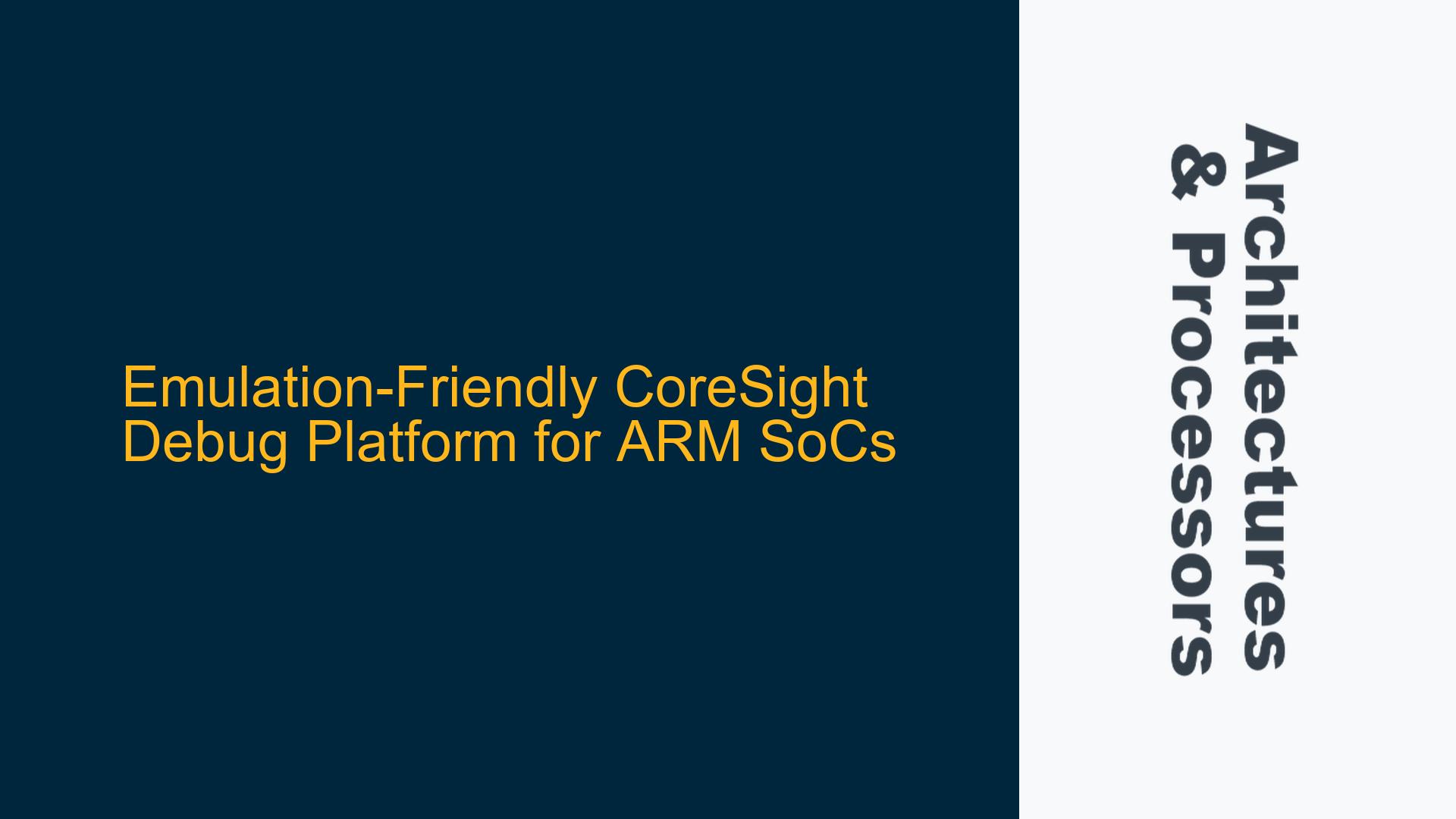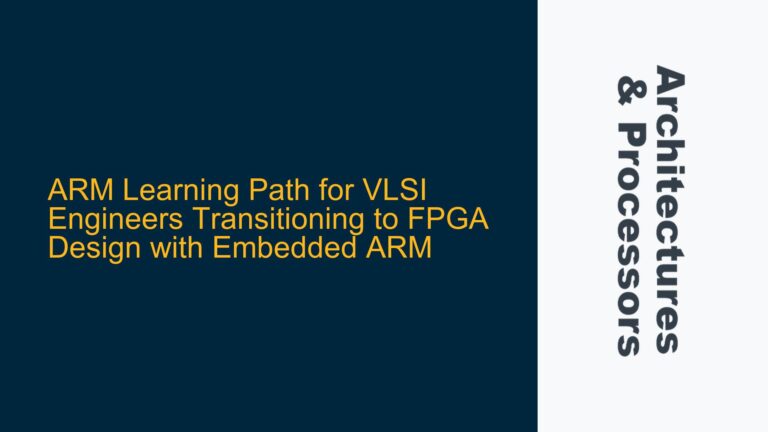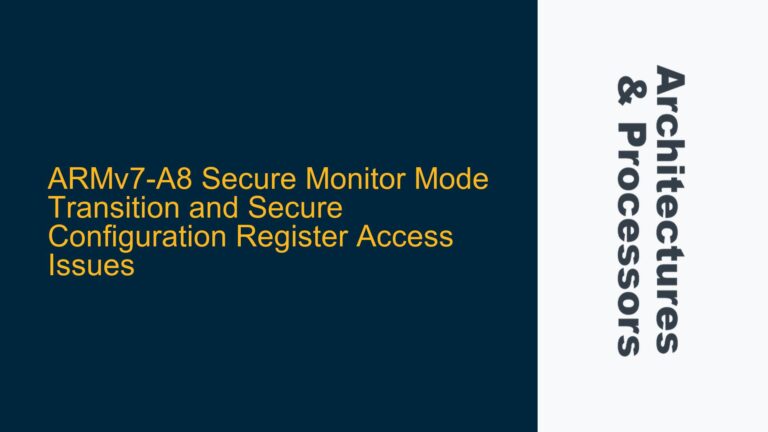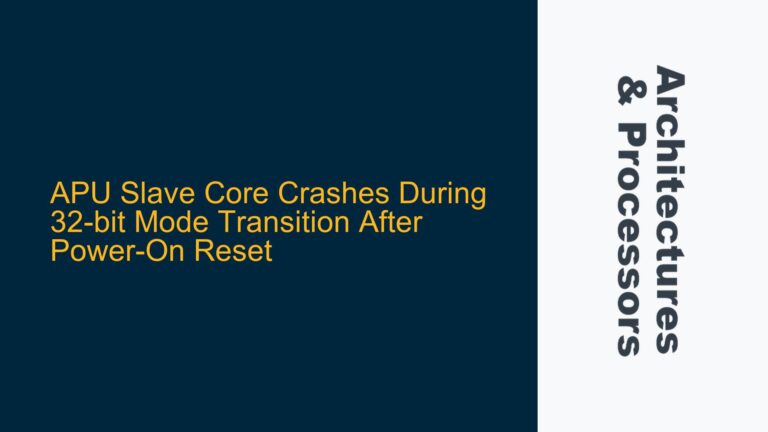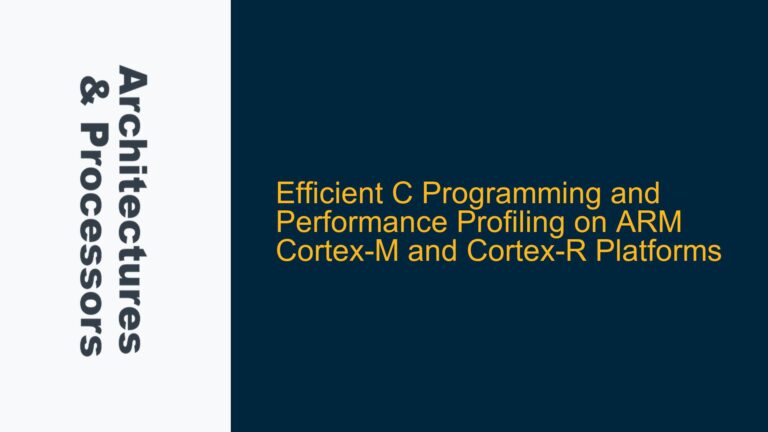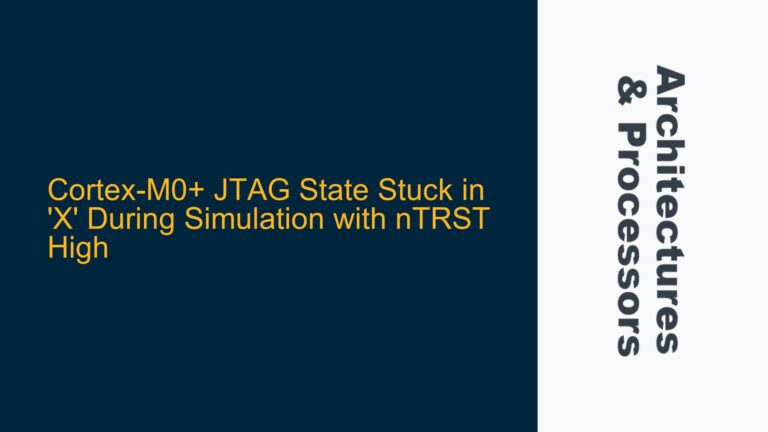CoreSight Debug Platform Challenges in Emulation Environments
The integration of a CoreSight debug platform into an ARM-based System-on-Chip (SoC) for emulation and simulation purposes presents several technical challenges. CoreSight is a sophisticated debug and trace architecture that provides real-time visibility into the operation of ARM processors and other system components. However, when deploying CoreSight in emulation environments, designers often face difficulties related to synthesizability, trace capture, and JTAG interface compatibility. Emulation environments, such as those provided by Cadence Palladium, Synopsys Zebu, or Mentor Veloce, require synthesizable RTL code that can be mapped to FPGA or emulation hardware. CoreSight components, while highly configurable, are not always optimized for such environments, leading to inefficiencies or even functional mismatches.
One of the primary challenges is the off-chip trace and debug functionality. CoreSight relies on trace ports and JTAG interfaces to export debug data, but emulation platforms often have limited I/O bandwidth and require specialized adaptations to handle high-speed trace data. Additionally, the proprietary nature of emulator-specific JTAG implementations can complicate the integration of CoreSight components. This creates a gap between the ideal debug visibility required for system validation and the practical limitations of emulation platforms.
Another critical issue is the lack of a standardized, emulation-friendly CoreSight implementation. While ARM provides synthesizable RTL for CoreSight components, these are typically optimized for ASIC or FPGA targets rather than emulation. This can result in suboptimal performance, increased resource utilization, and difficulties in achieving real-time trace capture. Designers must often rely on emulator vendors to provide proprietary solutions, which may not fully align with the CoreSight architecture or the specific requirements of the SoC.
JTAG Interface Limitations and Trace Data Bandwidth Constraints
The challenges in implementing an emulation-friendly CoreSight debug platform can be attributed to two main factors: JTAG interface limitations and trace data bandwidth constraints. The JTAG interface, while widely used for debug access, is not inherently designed for high-speed data transfer. In emulation environments, the JTAG interface must often be adapted to work with proprietary emulator-specific implementations, which can introduce latency and reduce the effectiveness of real-time debugging. This is particularly problematic for CoreSight, which relies on JTAG for configuration and control.
Trace data bandwidth is another significant bottleneck. CoreSight generates large volumes of trace data, especially in complex SoCs with multiple cores and system components. Emulation platforms, however, have limited I/O bandwidth and memory resources, making it difficult to capture and store trace data in real time. This can lead to data loss or incomplete trace captures, which undermines the purpose of using CoreSight for system validation. Additionally, the synthesizable RTL provided by ARM for CoreSight components may not be optimized for the specific I/O and memory constraints of emulation platforms, further exacerbating the problem.
The lack of a standardized approach to integrating CoreSight with emulation platforms also contributes to these challenges. Emulator vendors often provide proprietary solutions that may not fully support all CoreSight features or may require significant customization to work effectively. This can result in increased development time and effort, as well as potential compatibility issues between different emulation platforms.
Optimizing CoreSight for Emulation: JTAG Adaptation and Trace Compression
To address the challenges of implementing an emulation-friendly CoreSight debug platform, designers can adopt several strategies focused on optimizing the JTAG interface and managing trace data bandwidth. One effective approach is to adapt the JTAG interface to work more efficiently with emulator-specific implementations. This can involve using custom JTAG controllers that are optimized for the emulation platform, as well as implementing techniques such as JTAG compression to reduce the amount of data transferred over the interface. By reducing latency and improving data throughput, these adaptations can enhance the effectiveness of real-time debugging in emulation environments.
Trace data bandwidth constraints can be mitigated through the use of trace compression techniques. CoreSight supports various trace compression algorithms, such as run-length encoding and differential encoding, which can significantly reduce the volume of trace data generated. By enabling trace compression in the CoreSight configuration, designers can achieve more efficient use of emulation platform resources and ensure that trace data is captured and stored without loss. Additionally, designers can implement selective tracing, where only specific events or signals of interest are captured, further reducing the trace data volume.
Another key strategy is to optimize the synthesizable RTL for CoreSight components to better align with the constraints of emulation platforms. This can involve modifying the RTL to reduce resource utilization, improve timing performance, and enhance compatibility with emulator-specific features. For example, designers can use emulation-friendly memory models and I/O interfaces that are optimized for the target emulation platform. By tailoring the CoreSight implementation to the specific requirements of the emulation environment, designers can achieve better performance and more reliable debug functionality.
Finally, collaboration with emulator vendors is essential to ensure that the CoreSight implementation is fully supported and optimized for the target platform. Emulator vendors often provide proprietary tools and libraries that can be used to enhance the integration of CoreSight components. By leveraging these resources, designers can reduce development time and effort, as well as ensure compatibility between the CoreSight implementation and the emulation platform.
In conclusion, implementing an emulation-friendly CoreSight debug platform for ARM-based SoCs requires careful consideration of JTAG interface limitations, trace data bandwidth constraints, and the specific requirements of the target emulation platform. By adopting strategies such as JTAG adaptation, trace compression, RTL optimization, and collaboration with emulator vendors, designers can overcome these challenges and achieve effective real-time debugging in emulation environments.
